Chapter 3
9 Inclusive design examples to learn from
In this chapter, we provide nine examples of inclusive design and cover why inclusivity should be included at each stage of the design process.
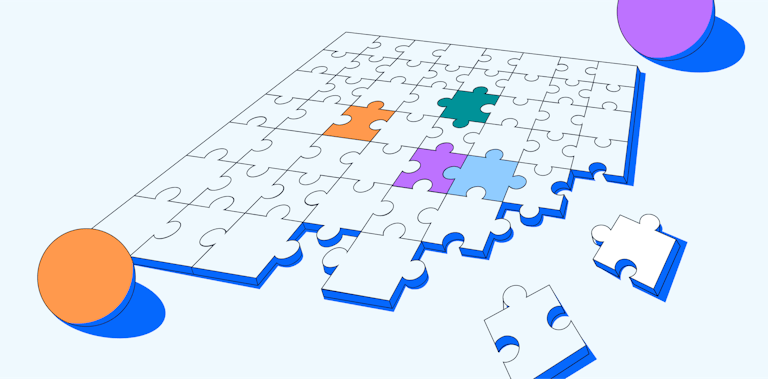
Inclusive design—like providing website audio guides for those who are hard of hearing, or braille equivalents of an instruction manual for people with visual impairments—is essential for social equity, but it also benefits businesses. By following inclusive design best practices, companies allow more people to use their products. This leads to better experiences for all because fewer are left out, improves user satisfaction, and increases company growth. When it comes to accessibility, new predictions indicate that the cost of non-compliance is about three times higher than that of complying.
As mentioned in chapter 1, inclusive design is a process, whereas accessibility is one of the primary outcomes of applying such a process. To create products that are inclusive and usable by all, you can use strategies such as abstracting and diversifying to create inclusive images, write simple copy so anyone can understand your message, and include a diverse group of people while conducting research.
Let's see how companies across different industries have successfully built inclusive products that benefit users and their businesses and how you can do the same by including research and inclusive design best practices in your design process.
9 Examples of inclusive design
1. This American Life: Transcripts for accessibility and inclusivity
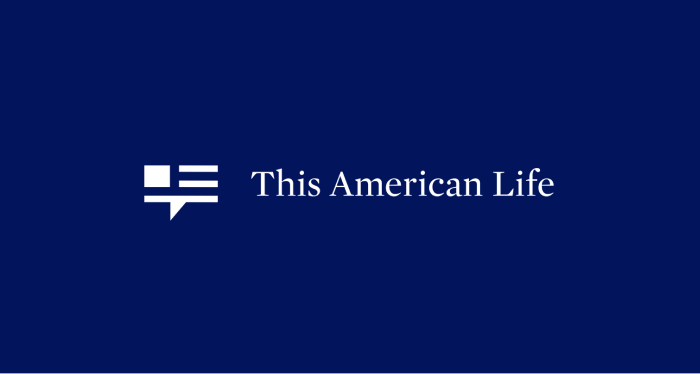
Source: This American Life
This American Life (TAL) is a weekly public radio program and podcast. In 2011, This American Life started transcribing its entire audio archive and making transcripts freely available to website visitors. As a result, the company reached a broader audience by making its content accessible to people with hearing impairments, visitors in sound-sensitive environments, and anyone who knows English as a second language. TAL also improved its SEO performance, increasing its search results by 6.86% and unique visitors by 4.18% over the following three years.
2. Shopify: Diverse illustration guide
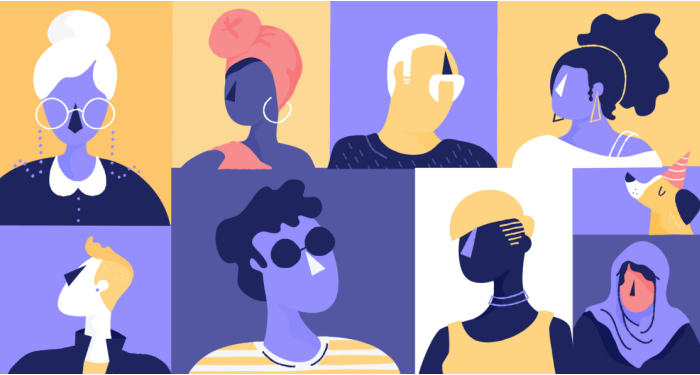
Source: "You can’t just draw purple people and call it diversity" by Shopify UX
In 2018, Shopify illustrator Meg Robichaud wrote a humble Medium post that walked readers through the company’s shortcomings and lessons learned from their previous illustration guide. In this post, Meg states that simply changing people's skin tone to purple doesn’t solve the problem of diverse representation. On the contrary, the best way to help people feel more connected to the brand and, ultimately, the product is to understand what the lives of Shopify merchants look like and create illustrations around that.
Meg does a great job of highlighting her own biases and recognizing that sometimes the work can feel like “it’s designers making things for designers. And literally no one else.” Getting out of your bubble and sharing your work with a diverse range of people is one of the key inclusive design principles outlined in chapter two.
3. Government of Canada: Gender diversity
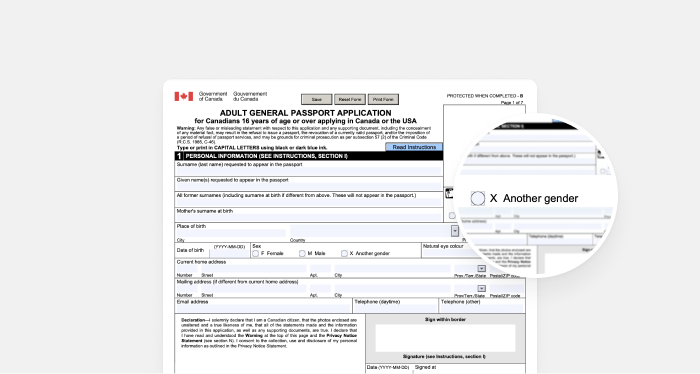
Source: Government of Canada
In 2019, the Canadian government acknowledged that gender exists on a spectrum, and people identify beyond the traditional 'female' and 'male' constructs. The government introduced a third gender option and allowed Canadian citizens and residents to update official documents, including passports, citizenship certificates, travel documents, etc. Several other countries now legally recognize non-binary people and allow citizens to identify with gender options beyond than 'male' and 'female'.
4. Microsoft adaptive accessories
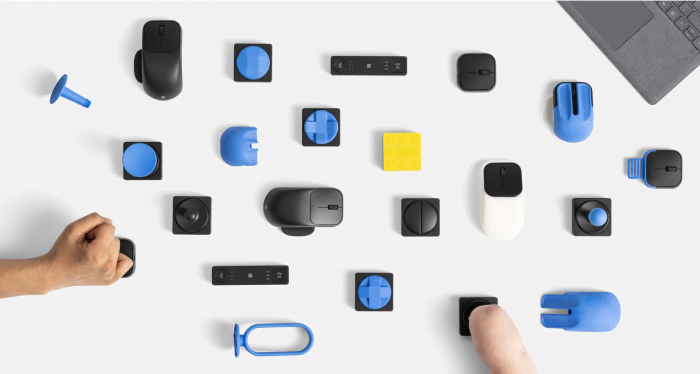
Source: "Increasing our Focus on Inclusive Technology" by Microsoft
Recently, Microsoft announced a new suite of accessories, such as mice and keyboards, designed to give people with physical impairments greater access to technology. In addition to making it easier for more people to use computers, the new Microsoft adaptive accessories support 3D printed add-ons so that consumers can customize each piece according to their specific needs and create their ideal setup.
5. Fenty Beauty: Diversity and inclusion in cosmetics
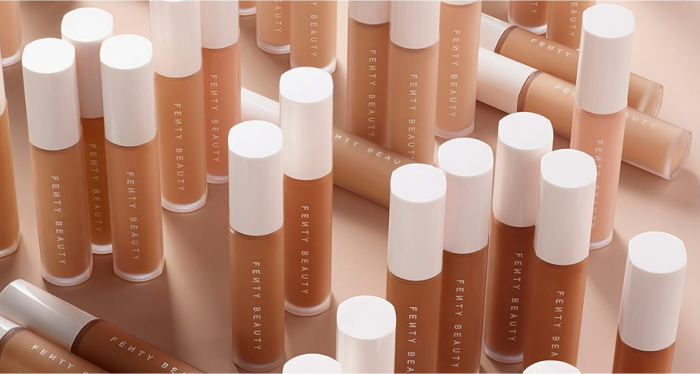
Source: Fenty Beauty
Created by Rihanna in 2017, Fenty Beauty reportedly made $100 million in its first 40 days, and Time magazine named it one of the 25 Inventions of the Year. Why? Because the beauty brand had something for everyone. The brand began offering 40 different shades of foundation, which has since expanded to 50. Fenty Beauty's success is greatly attributed to how the brand "connected emotionally with women who had long been treated as though they didn't exist by the beauty industry."
6. Uber: Safety settings for drivers
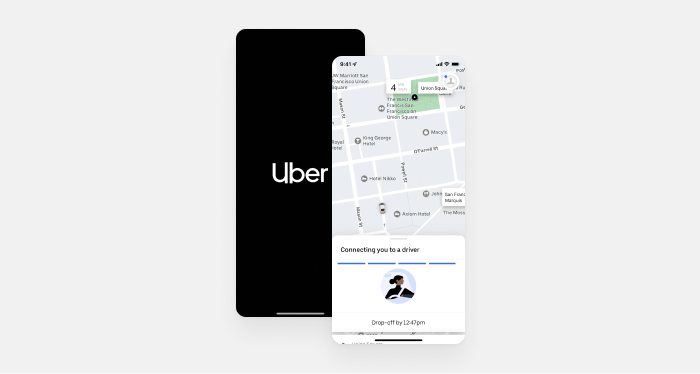
Source: Mobbin/Uber
Recognizing the dangers that women and non-binary people can face during trips, especially when alone, Uber has recently offered both women and non-binary drivers the opportunity to only receive pick-up requests from other women.
The features comes after several sexual assault reports from both drivers and riders. Of those, 89% of the reports came from women and female-identifying individuals and 9% were from men and male-identifying individuals. By giving women and non-binary driver-partners more choice on the trips they accept, this feature is a step in the right direction to lower the safety risks for groups of people who are already at higher risk simply because of their gender identity.
7. Tactile pavement: Leading the majority

Source: Unsplash
Invented in 1967 in Japan, tactile pavement, AKA detectable warning surface, can now be found all over the world. Initially created to guide people with visual disabilities, this design can be helpful for distracted walkers as we see cell phone usage increase. You can find this pavement alongside subway platforms, at the end of sidewalks, on the edge of stairs, and throughout major city streets to help guide and alert people when necessary. This is a great example of a product initially designed to solve an accessibility problem, which now benefits anyone.
8. Gender neutral bathrooms: Removing labels
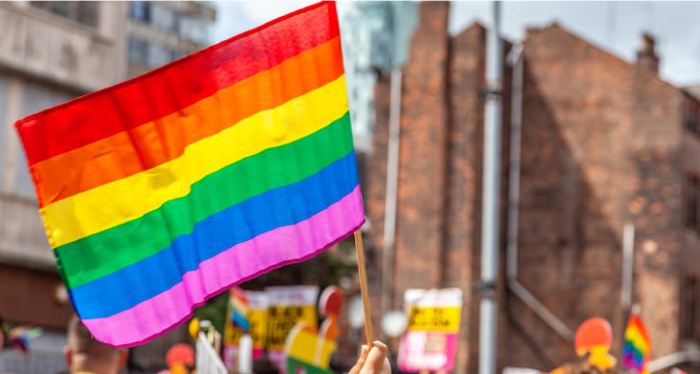
Source: SHRM
Gender-neutral bathrooms are becoming standard in many public buildings across Canada, China, the United States, and more countries. According to Yelp, more than 160,000 businesses in the U.S. choose to implement the change and introduce gender-neutral bathrooms. Installing gender-neutral restrooms provides an inclusive space where people don’t need to label their gender and choose based on it.
Furthermore, workplace experts have noted that offering gender-neutral bathrooms in the workplace benefits a company's employees and brand reputation. "By listening to your staff and enabling affirmative and inclusive spaces and dialogues, the organization would head in the right direction and retain a diverse and talented workforce."
9. Ikea ‘ThisAbles’: Additions to make life easier
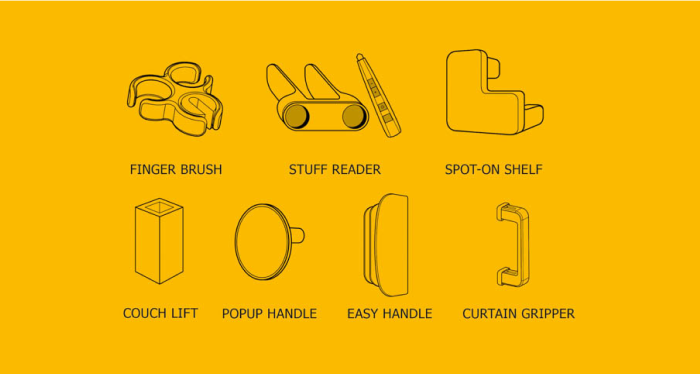
Source: Ikea This Ables
Ikea Israel has partnered with accessibility experts to make their furniture more inclusive and easy to use for as many people as possible. The project, ThisAbles, includes a new line of 3D print accessories that can be installed on Ikea furniture to make it easier for people to sit or stand up from a couch, for example, or turn the lights off and on.
To design these new accessories, product engineers and people with various disabilities worked together to assess how different items could be adjusted to better suit their needs. Also, customers can suggest new add-on designs that would help make other Ikea products more accessible.
Inclusive design is an ongoing process
Including research early and often in your design process is vital if you want to build an inclusive product. Your research will affect how inclusive (or not) your designs are. If you test your solutions with only one group of individuals, your results will be heavily biased toward that group. As a result, your designs will heavily favor that group and exclude other groups of people from using your product.
Whether you're exploring a new product or feature or revamping an existing one, inclusivity should happen at all stages of the process. David Fusilier, Associate Principal Product Designer at Spotify, explains:
For designers, it's very important to integrate inclusivity into earlier phases of the design process. If they save it for the end, they may end up retrofitting a fundamentally inaccessible design.
David Fusilier
Associate Principal Product Designer at Spotify
Share
Web Accessibility Engineer Tamas Geczy adds, "if inclusivity and this type of thinking can be part of demographic decisions during the conceptualization phase, that's even better. For design, this could translate into UX planning and asking fundamental questions around how interactions occur and if some of these interactions can make the product less inclusive."
It's also important to note that a product is never finished. Even after launching a new feature or product, you'll still need to gather user feedback and satisfaction, and listen to what your users say after they've had time to experience your product in a real-world scenario. "Not all situations that arise can be planned for in a lab/test setting," says Product Designer Miguel Hernandez. "Keeping your finger on the pulse and knowing that there may be something or someone that was overlooked is vital to creating an inclusive experience."
Inclusive design doesn't happen at a specific moment during design and product development. It happens at every moment. From the initial idea to discovery to development and launch, you should always include a diverse group of users in your process.
Final thoughts
If you create products for people, then you're aware of the fact that people are complex. One of the most important skills you can have as a designer or stakeholder in making design decisions is to create digital experiences and products that feel as simple and seamless as possible regardless of complexity.
To do that successfully, you'll need to consider how people differ, recognize that we're inherently biased, and do your best to ensure your biases aren't influencing your solutions. Involving a variety of people in your design process, both internally—with the team members you hire and work with, and externally—with the participants you recruit for research, will help ensure you're not building products for only one type of individual.
Remember to apply the inclusive design principles and best practices outlined in this guide at every stage of the development process to make informed decisions and create more inclusive designs—better designs.
Start testing your designs today
Maze Design Templates allow you to quickly test your designs with users and get actionable feedback to make informed design decisions.
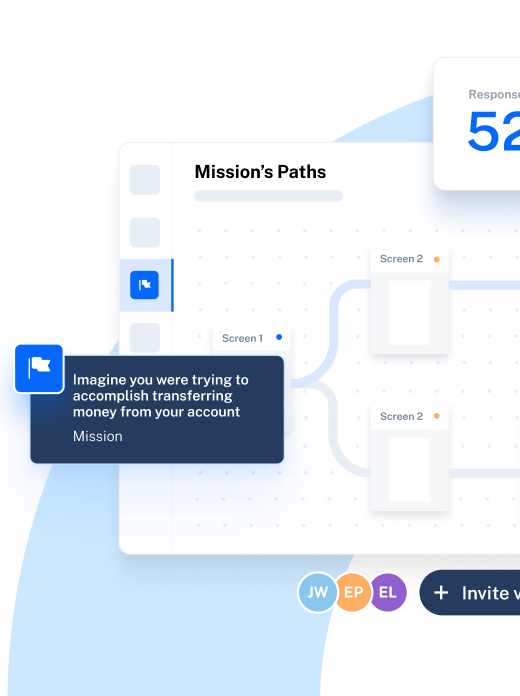
Frequently Asked Questions
What is meant by inclusive design?
What is meant by inclusive design?
Inclusive design is a design process that embraces human diversity and considers diverse groups of people and their needs. These practices enable products or services to be usable by as many people as reasonably possible, regardless of age, ability, socioeconomic background, etc.
What makes a design inclusive?
What makes a design inclusive?
As designers and people who build products, we need to be aware of our decisions as these may inadvertently lead to excluding others from enjoying an experience. Inclusive designs consider the needs and perspectives of others, including physical appearance, cognition, education, age, gender, etc.
How do you create an inclusive design?
How do you create an inclusive design?
To enact an inclusive design process in your organization, you can hire a diverse team, invite experts in the field to lead workshops and training programs, and include a diverse user base in your research. When making product decisions, you can also review the inclusive design principles discussed in this guide.


